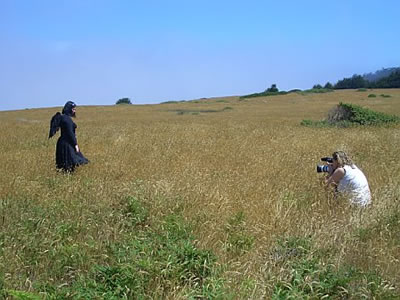Convergence
 How did cinema and poetry converge?
How did cinema and poetry converge?
Convergence is the evolution of an art form.
Some art forms have naturally converged, such as music, voice, and dance. Other art forms have converged in more avant-garde arenas and are born out of experimentation.
Rather naturally, as science and technology advance and converge (bio-tech) and our social experience is increasingly mediated (online social networks), art forms converge with technology. As a result, we have digital painting, music mash-ups, and electronic instruments.
Before recording media, music was a live-performance-only art form, but as art evolves with technology, humans naturally seek ways to manipulate art with technology. Thus, with the invention and widespread use of audio tape, tape recorders, microphones, and today’s digital audio recorders and non-linear computer mixing and editing, plus the commonplace distribution of music via the Internet, we see how technology has converged with an art form.
This is the evolution or the advancement of an art form. Without this harmonious updating, an art form risks irrelevancy and its contribution to society is unfulfilled.
Imagine an excellent sports team who faces an easy opponent – if they always played this same opponent, they would never be challenged nor would their game skills ever improve. If a violinist plays one song perfectly, but cannot play anything else well, then the violinist’s skill cannot advance. Cognitively, as long as our concepts of what art is remain open and accepting of challenges and a variety of forms, our understanding and appreciation of art blossoms and our brain thanks us for new ways of thinking.
In “Mallarme and Dubussy: Unheard Music, Unseen Text,” Elizabeth McCombie says of Mallarme’s Un coup de des, that “today is still considered one of the works most radically disruptive of established poetic codes.” For Mallarme, poetry should never reveal anything directly, but use symbolic language that prompts the reader to think.
CONTINUE TO NEXT SECTION>>> 21ST CENTURY